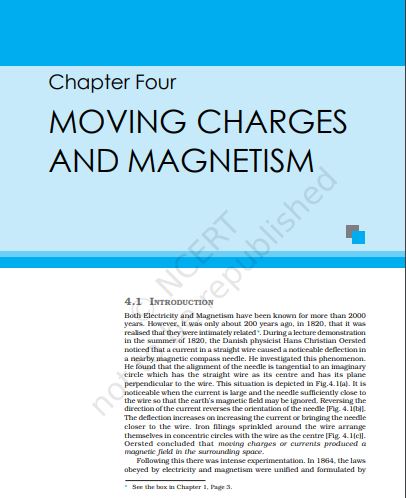‘NCERT Solutions for Class 12 Physics Chapter 4‘ PDF Quick download link is given at the bottom of this article. You can see the PDF demo, size of the PDF, page numbers, and direct download Free PDF of ‘Ncert Class 12 Physics Chapter 4 Exercise Solution’ using the download button.
NCERT Class 12 Physics Textbook Chapter 4 With Answer PDF Free Download

| Author | NCERT |
| Language | English |
| No. of Pages | 41 |
| PDF Size | 13.1 MB |
| Category | Egnlish Book |
| Source/Credits | ncert.nic.in |
NCERT Solutions Class 12 Physics Chapter 4 Moving Charges and Magnetism
NCERT Class 12 Physics Textbook Chapter 4 With Answer PDF Free Download
